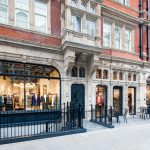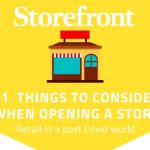While the world attempts to return to a semblance of normality, it is clear some things may have changed irrevocably. The world of retail is no exception, so what is retail’s new normal?
The Covid pandemic is one of only a few ‘before and after’ moments in history. When everything can be put into context as ‘before Covid’ or ‘after Covid’.
During lockdown, physical retail across the world was forcibly upended and consumer behavior adapted accordingly. Retailers opening up again are operating in a different world.
We recently wrote a piece on how to operate a store safely in a post-covid world (check that out here) so in this article we’re going to talk through some of the longer-term impacts and what retailers need to be aware of in order to succeed.
Physical vs digital a thing of the past
Even before the pandemic, many brick-and-mortar retailers were struggling. The reasons for this are countless and complex but it is safe to say that the emergence and success of ecommerce is responsible for much of it.
During lockdown, consumer behaviour was forcibly changed. With physical stores shut, everyone had to turn to the digital world for their retail needs, including industries and customer segments that previously avoided doing so. Now these barriers have been broken, it is unlikely things will return to how they were before. The genie is out of the bottle.
What this means is that the offline and online relationship is more important than ever. Brands that cannot combine the two will struggle. Physical retail remains a very powerful tool for customer engagement and the digital environment will never be able to compete with the value and experience a physical store can provide.
This so-called ‘phygital’ approach is far from a new concept. But this process will be a continuous evolution, not a single change. Are we going to see the virtual closet Cher Horowitz uses to select what to wear in Clueless? What about holographic fashion shows? No idea, but the brands that make the greatest jumps and seamlessly combine both the physical and the digital to maximise the impact of each will be the ones that thrive.
Coping with a recession
It’s no secret that the world is facing a probable recession of significant size. Unlike past recessions however (2008, 1990s etc), the Covid recession was triggered by a sudden shutdown of consumer spending. Clear, obvious and immediate. Previous recessions have left lasting imbalances that took years to work out. While many economists believe we may recover quickly there’s no hiding the fact that we’re in for a tough period.
How will this impact retail? Well, for starters, people will have less money and will be less willing to spend what they have. This reduced consumer spending will hit retail hard. Retailers will have to fight and, just like in previous lean periods, build trust and loyalty by delivering exceptional experiences and being trustworthy.
History shows us that recessions expose existing weaknesses, accelerate emerging trends, and force organizations to make structural changes faster than originally planned. The brands that adapt, change their practices and concentrate on delivering value to their customers will emerge on top and those quickest to do so have a great opportunity to establish themselves.
Contactless shopping the new norm?
Another trend that will surely become mainstream in future; contactless shopping refers to the practice of not actually selling anything in your stores. A shopping experience with no touching of products, no restocking of displays, and no need for huge numbers of customers. Products are showcased in displays and purchases are either made there and then and produced from the back or delivered straight to your house the next day.
While this is a format that has evolved due to the short-term constraints of operating in a Covid environment, it’s highly probable that customers will grow to at first accept it and then actually prefer it.
 Appointment-only shopping?
Appointment-only shopping?
We are already seeing this with a number of design labels and fashion brands and it’s a trend that may stick around after Covid becomes a bad memory. In short, ‘appointment only’ is when you book an appointment and get a time slot in the store on your own or with a limited number of other customers.
While in the short-term this is very much about maintaining social distancing protocols and making the customer feel safe, in the long-term it may endure as it provides a number of significant benefits. From the retailer’s perspective, customers in an appointment are more likely to make purchases and in this way it allows brands to focus more of their time and effort on their most valuable customers who have already made a commitment. From the customer’s perspective, an appointment is a much more personalised experience – everyone gets a personal shopper!
Experiential retail the differentiator
If there’s been a common theme so far it’s that the customer experience is and will continue to be key. Physical retail provides opportunities for brands to engage with customers in ways the online doesn’t. With customers becoming more and more comfortable purchasing all manner of goods online, physical retail needs to wow and delight. People are looking to be entertained and brands need to step up to the plate to create new bonds with customers and build loyalty.
Experiential retail will be the norm as physical retail moves from transactional to theatrical.
Flexible retail – fewer flagships, more theatre?
As we have seen, the Covid crisis has acted as a catalyst, speeding up many of the trends we were already seeing. Phygital, contactless, experiential… these are all terms we have been talking about for years. There’s nothing drastically new and nothing that should overly surprise anyone. But when you take step back and look at the bigger picture it’s possible to get a glimpse of what the overall picture of retail will look like. It’s ‘new normal’.
If a physical location is more about gathering marketing insight, testing new products and engaging with new and existing customers, will the make up of the high street and shopping malls look the same?
Brands need flexibility when considering their physical retail strategy. In the past we have called this ‘short-term retail’ – everything from six month pop-ups to one-day events – but now this approach is is going to be far more widespread. Now, we’re talking about ‘flexible retail‘ – the blurring of lines between long term and short term.
Expect brands to scale back their flagship stores and instead create programs of flexible, engaging short-term retail projects that move around and evolve. Positioning their physical retail strategies alongside their marketing programs, all fully linked with and powering ecommerce offerings.
Long-term leases are a thing of the past. Pre-Covid we were already seeing a significant change from 5-10 year leases to shorter-term more flexible agreements as brands looked to minimise their risk but now with even greater need for flexibility expect the pendulum to swing further and more and more brands demand flexible terms.
With large retailers struggling and amidst a recession, landlords will need to reassess their options and approaches if they want to continue filling their properties with brands that draw consumers and prove profitable.
If you want to talk through any of the points in this article with one of our retail experts please drop us a line. We’d be happy to help.
Or, check out this page for more on why now could be the perfect time to invest in physical retail.


 Appointment-only shopping?
Appointment-only shopping?


